The infrared lens is a crucial component in an infrared thermal imager. It focuses the infrared radiation emitted by the target object onto the detector. The detector then converts the incident infrared radiation into electrical signals, which are further processed to generate a visible image known as an infrared thermal image.
For excellent infrared imaging,
Choosing the right lens is indispensable.
So,
What aspects should be considered when selecting a suitable lens?
How can the selection be made based on lens parameters?
Focal length refers to the distance from the optical rear principal point to the focal point and is a crucial performance indicator for the lens. Infrared thermal imagers typically employ a single lens. Our infrared imaging devices are generally equipped with standard, long-focus, and wide-angle lenses.
At the same detection distance, the imaging distinctions of the three lenses are illustrated in the following diagram.
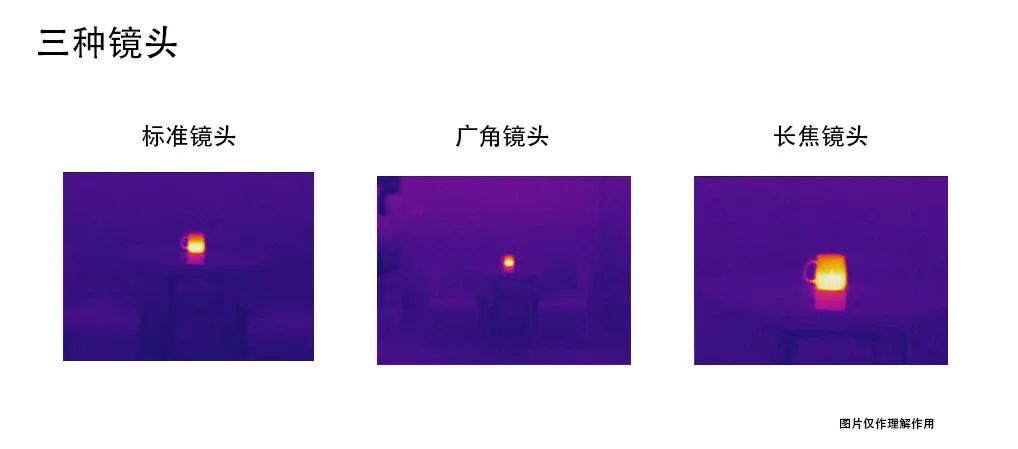
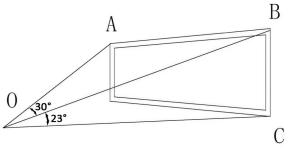
The size of the field of view angle determines the viewing range of optical instruments. The field of view angle is divided into horizontal field of view angle and vertical field of view angle.
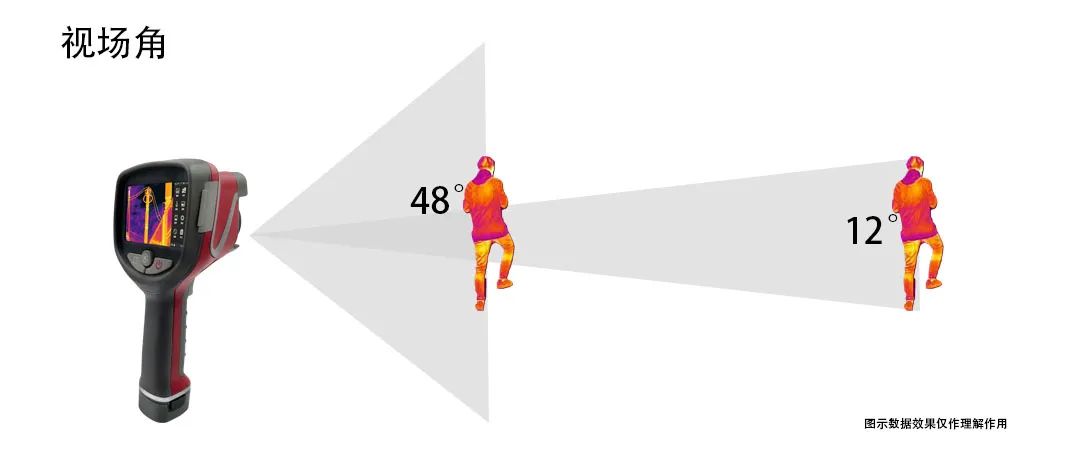
At the same measurement distance, the larger the field of view angle of an infrared lens, the greater the measurable range. When the object under measurement is large, and space is limited, a wide-angle lens with a larger field of view angle is suitable. Conversely, when the object is small and located at a considerable distance, a telephoto lens with a smaller field of view angle is more appropriate.
Spatial resolution refers to the minimum distance between two adjacent targets that an infrared thermal imager can distinguish. At a unit testing distance, the infrared thermal imager uses the instantaneous field of view (IFOV) to represent the minimum target (area) that each pixel can detect. This is a comprehensive performance parameter determined primarily by the pixel size and the selected lens angle. It serves as a technical indicator of the thermal imager's capability to process spatial details.
| model | Spatial Resolution | Coverage Area of a Single Pixel (Using a Detection Distance of 10m as an Example) |
| T5 | 1.13mrad | 11.3mm |
| T6 | 0.68mrad | 6.8mm |
| T100 | 0.48mrad | 4.8mm |
In general, the smaller the spatial resolution value of a thermal imager, the smaller the range of identifiable pixels, meaning that at the same detection distance, it can detect smaller targets. Alternatively, at a greater detection distance, it can measure the same target.
This is a critical parameter to ensure clear imaging in a thermal imager. If the distance is less than the minimum imaging distance, the imager may not focus accurately or measure temperature precisely. Therefore, with a smaller Instantaneous Field of View (IFOV), the minimum imaging distance is reduced, allowing for the detection of smaller targets.
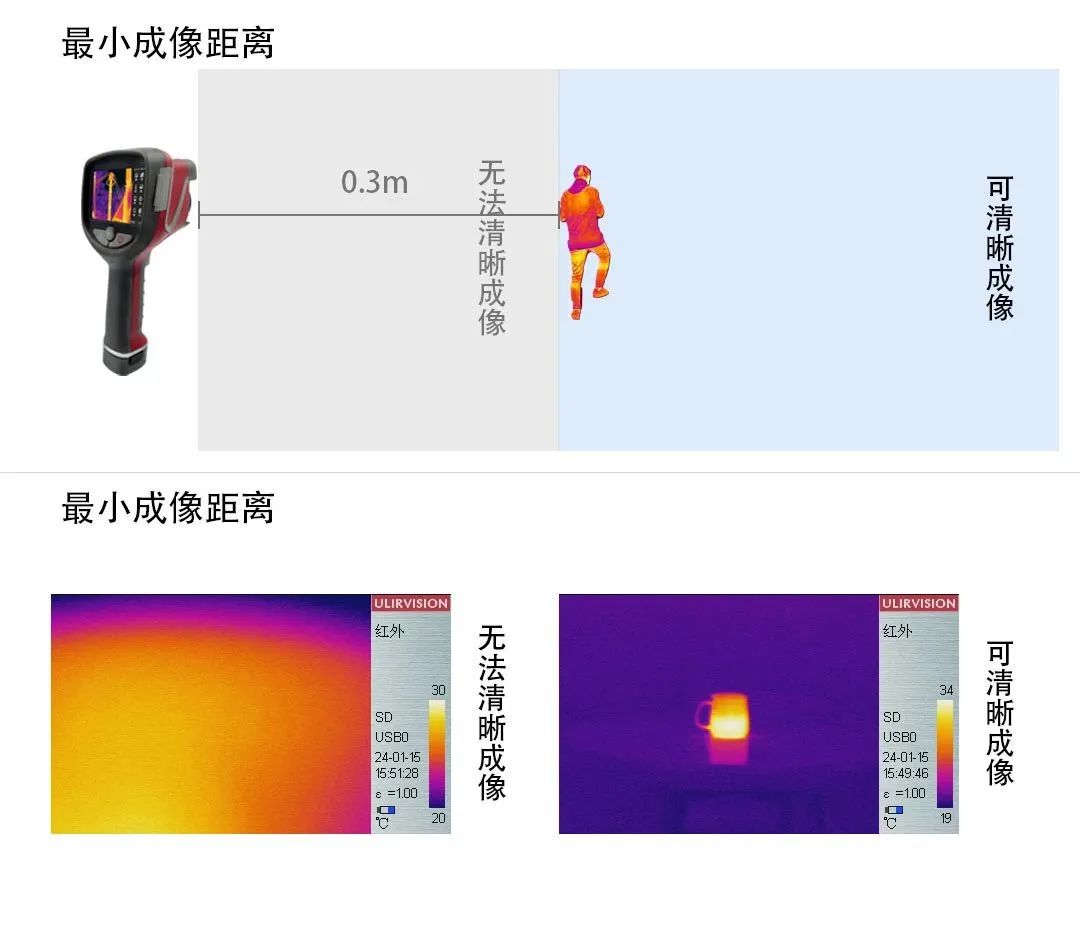
After understanding the lens parameters, another crucial consideration when selecting a thermal imaging lens is the application scenario.
Different thermal imager applications have varying requirements for lenses. Here are some common application scenarios:
Industrial Inspection
In industrial environments, thermal imagers are used to detect equipment malfunctions, overheating, or energy efficiency issues. For example, in high-voltage cable inspection, when the target under examination is at a considerable distance from the ground, a telephoto lens with a small field of view angle is more suitable. This allows for precise identification and localization of issues by enabling a clearer view at a greater distance.

Building Diagnostics
Used to detect thermal losses, insulation issues, or water infiltration in buildings. This typically requires lenses with a larger field of view to observe larger surface areas in one view.

Wildlife Observation and Hunting
Used for observing animals at night or in low-light conditions. Such applications require lenses with a longer focal length to observe animals from a safe distance. Additionally, the field of view should be moderate for tracking animals. For example, in densely wooded areas with many obstacles, a larger field of view angle is chosen for a broader view, quicker identification, and easy locking onto thermal targets. In vast and flat plains, a smaller field of view angle is chosen for a longer range and clearer details of the target.
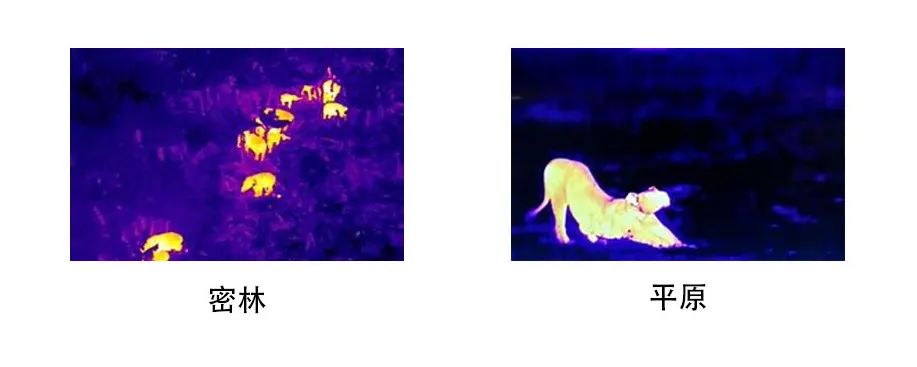
Research and Development
Researchers use thermal imaging to study various scientific problems, ranging from material properties to biological processes. Such applications may require specific lens characteristics, depending on the research objectives.

Choosing the right one doesn't mean choosing the expensive one. When your needs are clear, making sure the parameters meet the requirements as much as possible is the most suitable way to select an infrared thermal imager.
ULIRVISION Technology offers a variety of infrared thermal imagers with comprehensive lens configurations, catering to various usage scenarios.
Feel free to inquire at any time.
We will recommend the most suitable product based on your requirements.